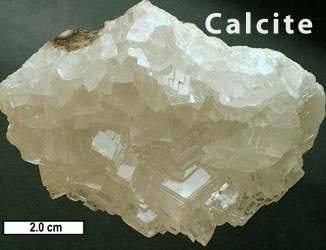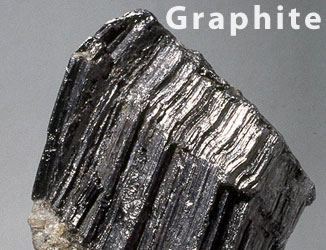Several properties can be used to identify particular minerals.
Magnetite: The mineral magnetite is magnetic. Lodestone, a variety of magnetite, is a natural magnet. To test for magnetism, suspend the magnet from a string and then draw it near the sample. If magnetic, the magnet will be deflected toward the sample.
Plagioclase feldspar: The mineral plagioclase feldspar commonly shows very small, parallel lines on some of the cleavage planes. These are called striations. In some cases, these striations are the only way to distinguish plagioclase feldspar from orthoclase feldspar.
Graphite: Has a greasy feel. After feeling it, check your fingers. They will be dirty since graphite also has a hardness of “1.” You can also see if you can mark on paper with the sample. It is “pencil lead.”
Sulfur: Is a native mineral with a chemical formula of S. It smells like rotten eggs when streaked or scratched. It is also bright yellow in color.
Calcite: Calcite will effervesce (fizz) when a drop of concentrated lemon juice is placed on its surface. It also has a hardness of 3- it can be scratched with a penny but not with your fingernail.

